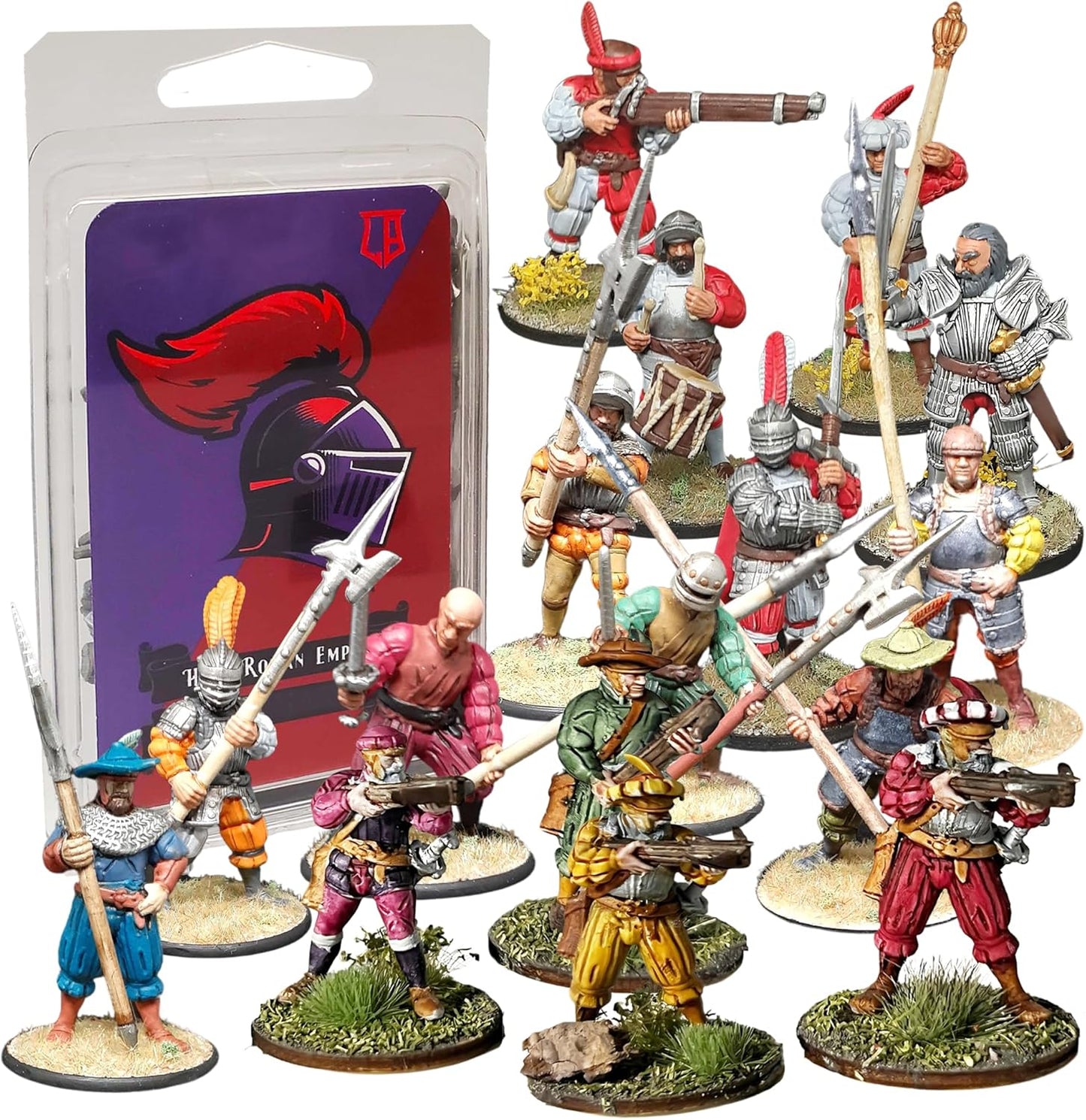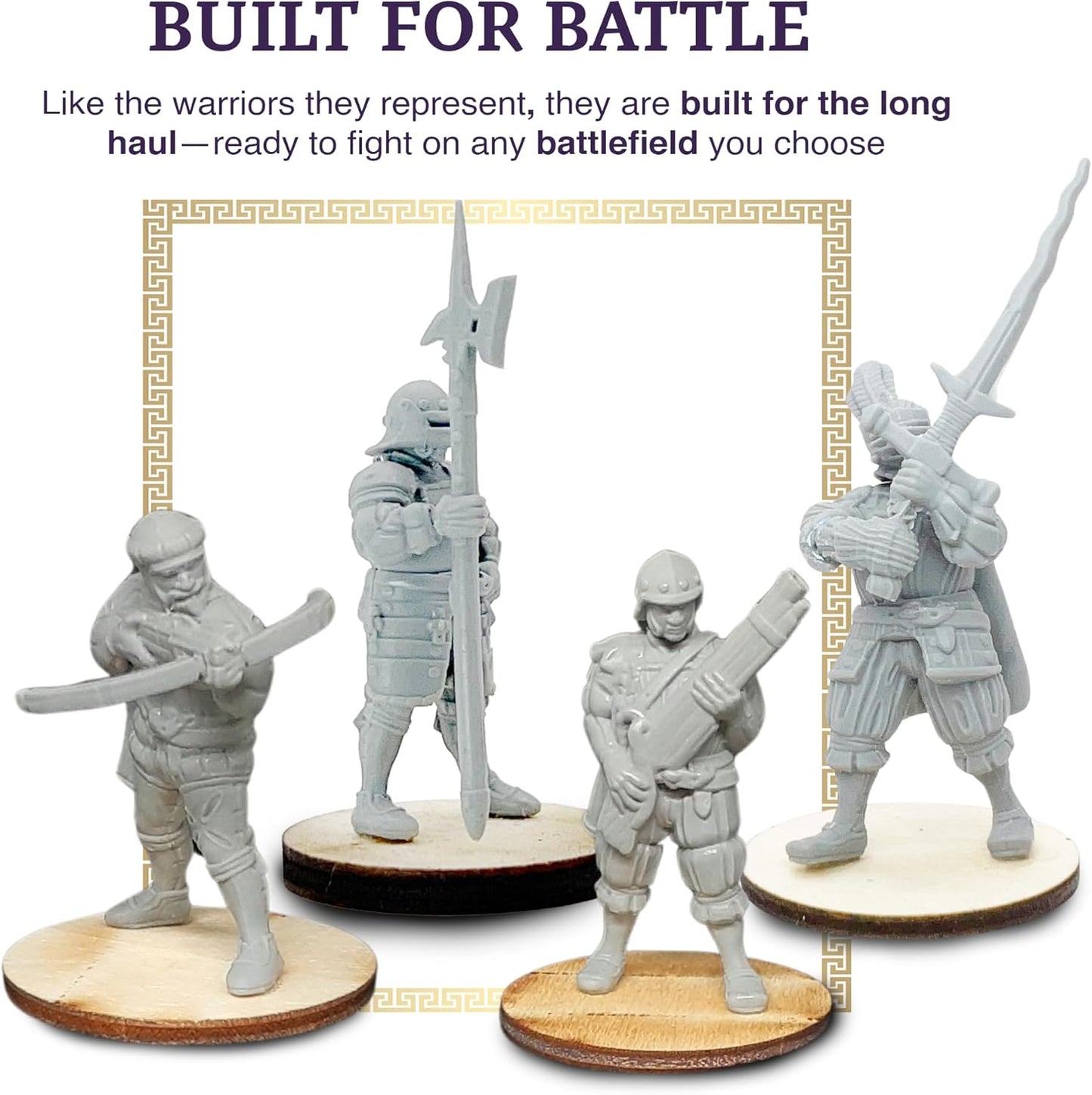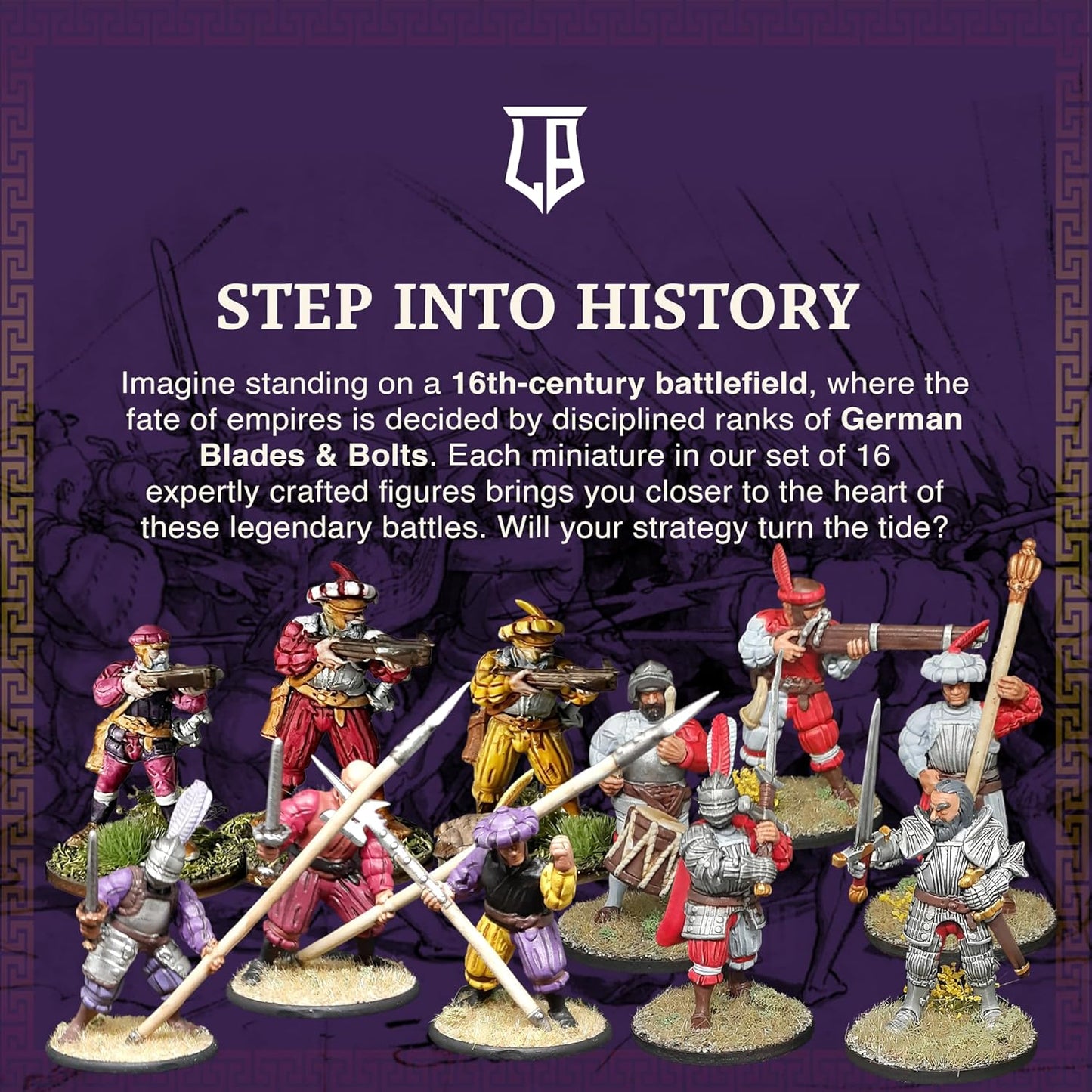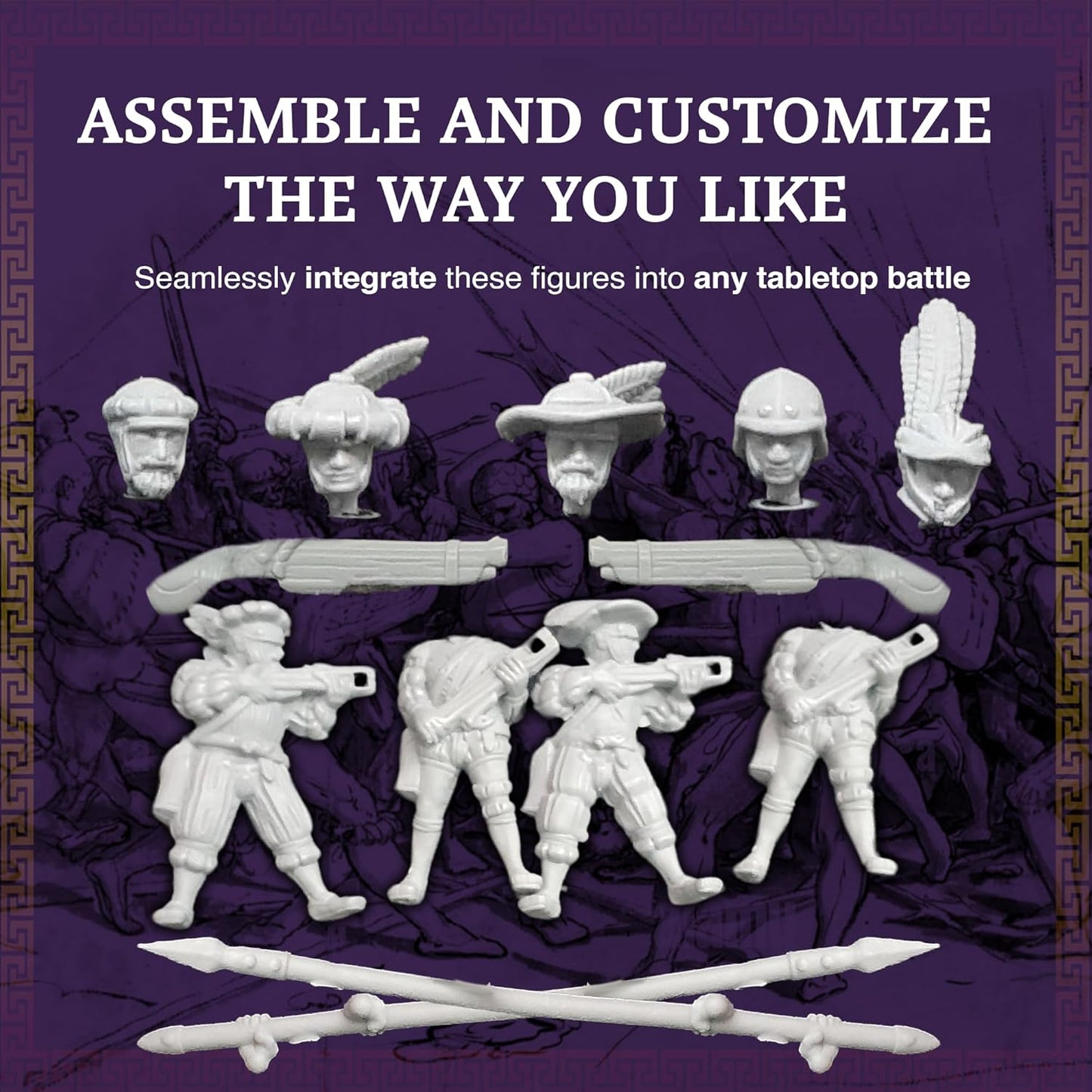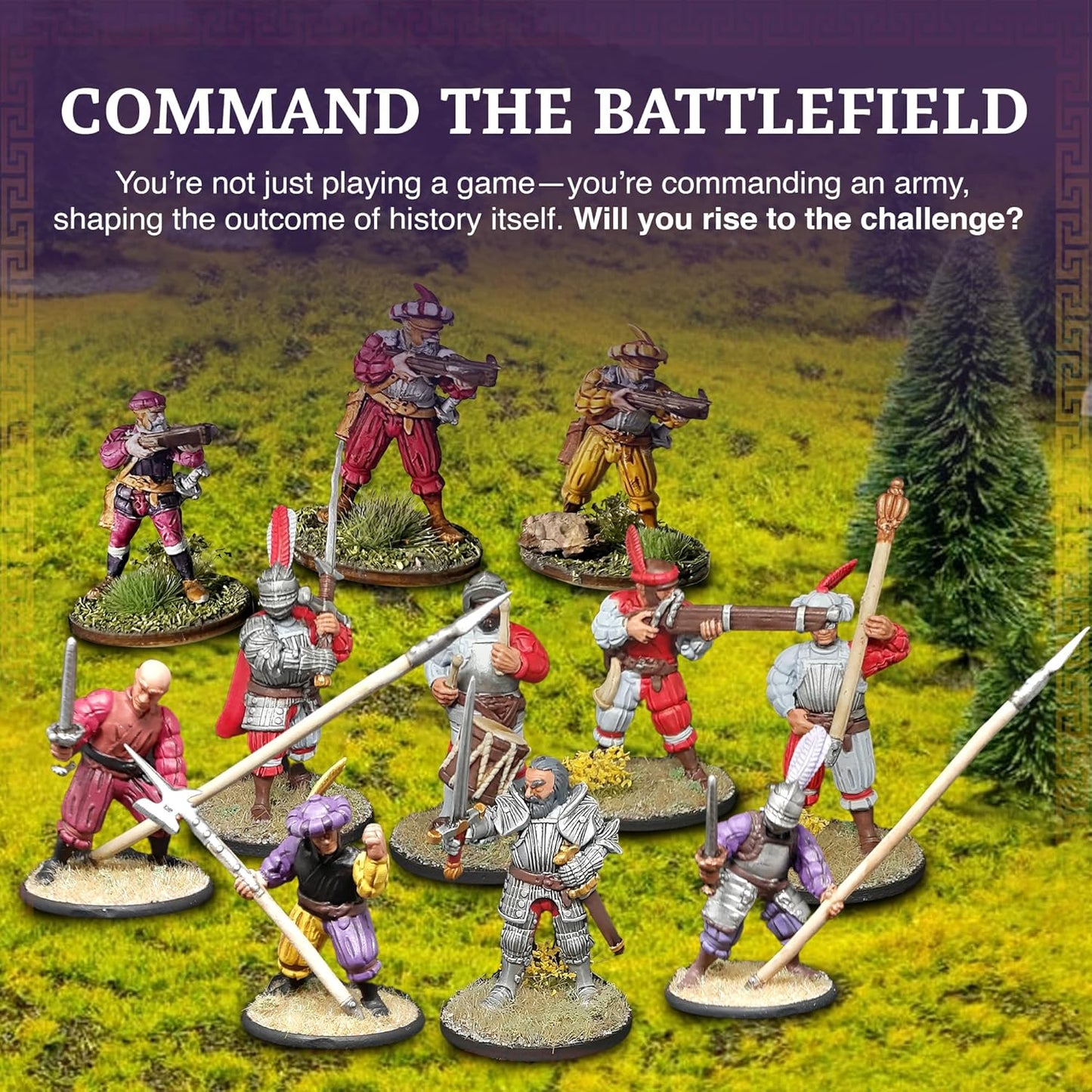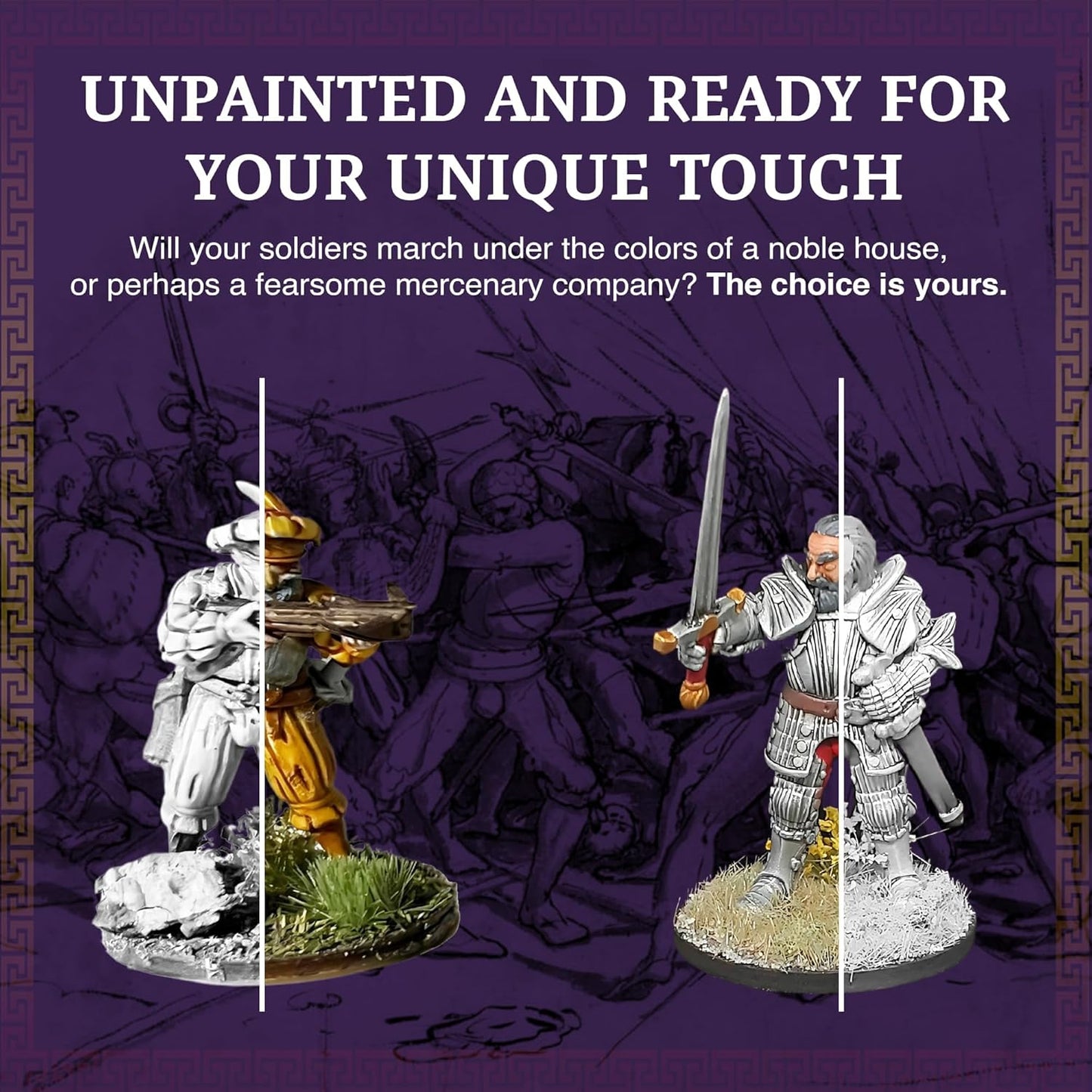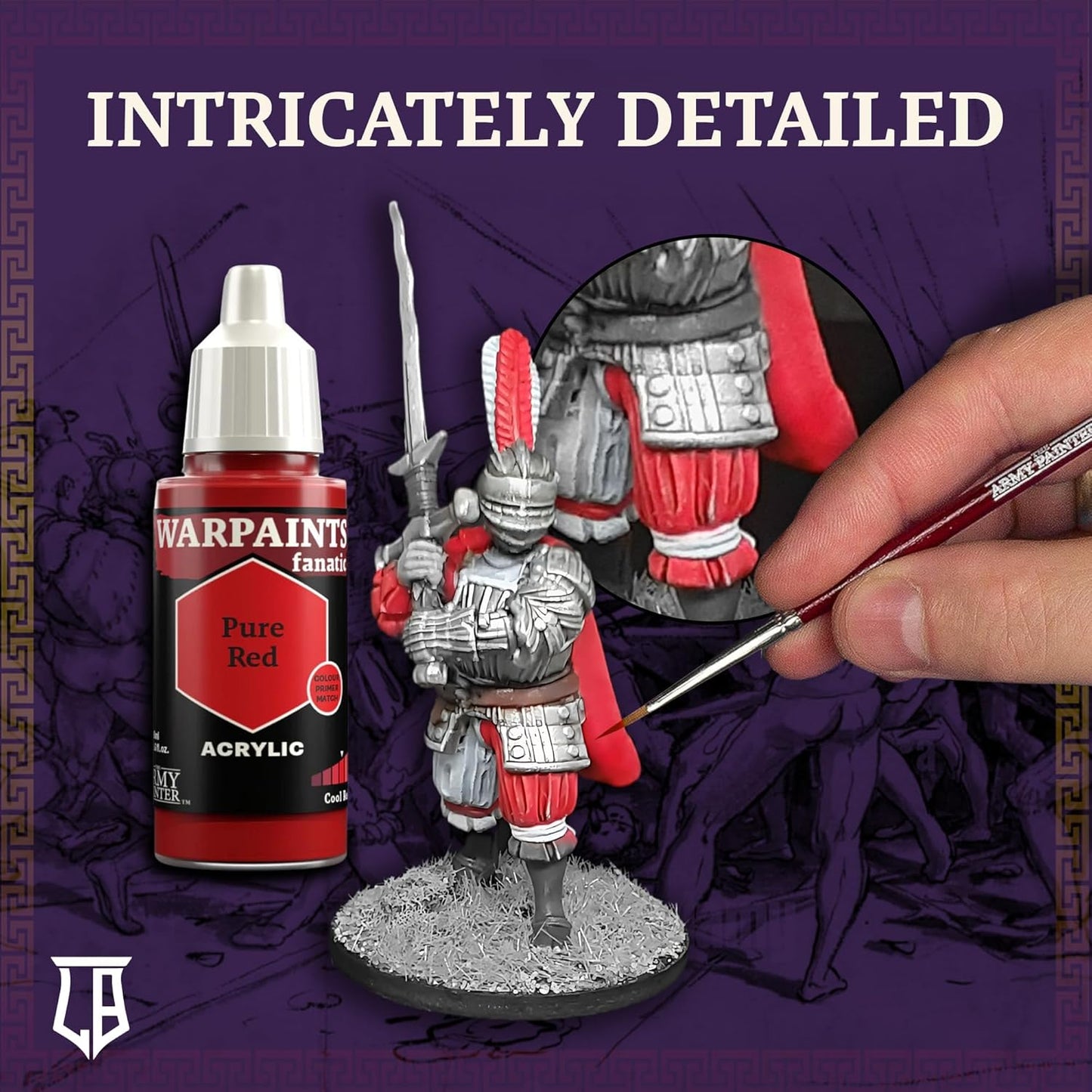Ludus Bellum
Ludus Bellum - German Blades & Bolts Set
Ludus Bellum - German Blades & Bolts Set
Couldn't load pickup availability
Description:
German Pikemen and Halberdiers for 15th and 16th Century Armies
The 15th and 16th centuries were marked by significant historical events, including territorial conflicts, religious wars, and the evolution of infantry tactics. The German Pikeman and Halberdiers played a pivotal role during this period of territorial disputes, political upheaval, and military innovation.
Battles and Wars:
Italian Wars (1494-1559): The German Landsknechts, including Pikemen and Halberdiers, were frequently employed as mercenaries during the Italian Wars. They participated in battles such as the Battle of Pavia (1525).
Reformation and Religious Wars: The Reformation and subsequent religious conflicts in Europe, such as the Schmalkaldic War (1546-1547), saw the use of infantry, including Pikemen and Halberdiers, as religious and political factions clashed.
Tactics and Strategies: The German Pikeman and Halberdiers were renowned for their disciplined formations and battlefield effectiveness. Their tactics involved:
Pike Formation: Pikemen formed tight formations with long pikes to create a formidable defensive barrier. These formations were used to repel enemy charges and protect flanks.
Halberdiers: Halberdiers wielded versatile polearms that could be used for thrusting, hooking, and slashing. They were often positioned at the forefront of formations to engage the enemy in close combat.
Combined Arms: These infantry units often worked in conjunction with artillery and cavalry, forming a balanced and effective fighting force.
Siege Warfare: While primarily infantry, Pikemen and Halberdiers also participated in siege warfare, assisting in the capture of enemy fortifications.
German Crossbowmen for 15th and 16th Century Armies
In the transitional centuries bridging the medieval and modern eras, the crossbow held a significant position in the arsenals of European militaries. The German states, diverse and often embroiled in both internal and external conflicts within the Holy Roman Empire, relied heavily on crossbowmen. These troops combined the long-established power of the crossbow with German engineering and tactics, setting them apart as formidable marksmen.
German Crossbowmen were typically deployed as skirmishers and support units. Their main role was to weaken or disrupt enemy lines with volleys of bolts before the main force engaged. With their piercing power, they could penetrate even some forms of armor, making them a genuine threat to both infantry and cavalry. Employing pavises (large shields) for protection, they could reload behind cover, ensuring a continuous rain of bolts upon the adversary.
Their presence was marked by several significant conflicts, from the internal struggles of the Holy Roman Empire's principalities to the broader sweep of the Italian Wars. Notably, they played roles in battles such as the Battle of Pavia (1525) and during the turbulent times of the Protestant Reformation.
Share


